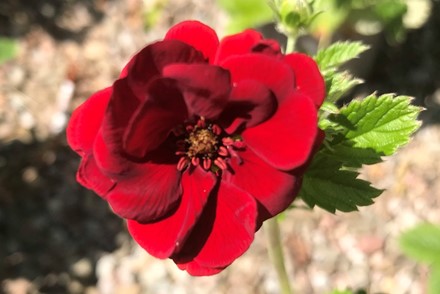Are you ready to start a National Plant Collection?
The missing collections campaign asks people with a passion for plants to start a National Plant Collection of their own, and join Plant Heritage in growing, sharing and saving plants.
Every year we highlight much-loved plant groups that are currently not represented by an accredited National Plant Collection and this year we are focussing on pollinator-friendly plant groups. Thanks to this campaign, in recent years we have seen new collections coming through for Baptisia, Eryngium, Verbena, Alcea, Ginkgo, Thalictrum, Tradescantia and Aeonium.
In addition to this year's choice, there are actually several groups of garden plants grown in the UK that are not showcased in a collection. So, whether you're curious about plants, big or small, we are confident that there will be a plant group to suit your passion.
Missing collections highlighted for 2025 include:
Argyranthemum: Often grown in pots, their large daisy shaped flowers add bursts of colour from late spring to the first frosts. Their long blooming season attracts a range of pollinators too, including honeybees.
Caryopteris: Best in a sunny border or gravel garden with free-draining soil, these fluffy blue-purple flowers are striking in late summer and early autumn, providing late-season nectar for butterflies and bees.
Clethra: Also known as Summersweet, these fragrant flowers and their nectar attract a wide variety of butterflies and songbirds in the summer, and seeds in winter.
Erysimum: ommonly known as wallflowers, are spring to summer-flowering plants that provide vibrant displays of colour. Many varieties are hardy perennials and have attractive evergreen foliage, adding structure and aesthetic value to the garden even after the flowers have faded.

Argyranthemum 'Vancouver'
© Plant Heritage

Caryopteris x clandonensis 'Heavenly Blue'
© Plant Heritage

Clethra barbinervis
© Marwood Hill Gardens

Erysimum 'Butterscotch'
© Plant Heritage
Gaillardia: Known as Blanket Flowers for their masses of richly coloured, daisy-like flowers in vivid shades of red, yellow and orange. Perfect for a wildlife garden, they bloom from late spring to early autumn and appeal to butterflies, bees, beetles and birds for their seeds.
Ligularia: Another daisy-like flower, these imposing herbaceous perennials are ideal in boggy areas and alongside water features, and cater well for butterflies, bees and hoverflies.
Lysimachia: Related to Primula and Lythrum, they thrive in full sun if the soil remains moist. They form upright dense spikes with yellow or white flowers, and their pollen and nectar attracts many species. Some types also produce floral oils which attract loosestrife bees.

Gaillardia pulchella
© Public Domain Image Flickr

Ligularia × Yoshizoeana 'Palmatiloba'
© Plant Heritage

Lysimachia clethroides
© Plant Heritage
Osteospermum: Also known as Cape Daisy or African Daisy, these long-lasting colourful flowers are beautiful from summer to autumn. Another favourite with pollinators.
Potentilla (herbaceous): This huge but recognisable genus flowers from late spring through to autumn. It’s a favourite of many pollinators and is one of the known food sources for the larvae of the rare grizzled skipper butterfly.
Verbascum: With their distinctive, upright spires of flowers, these pretty perennials (or biennials) – which come in white, yellow, orange, blue or purple – are great for bees, hoverflies and moths.

Osteospermum 'Sennen Sunrise'
© Plant Heritage

Potentilla 'Velours Pourpre'
© Plant Heritage

Verbascum 'Clementine'
© Plant Heritage
Interested? Take a look at how to start a National Plant Collection,
or find out more about other collections ideas here.

